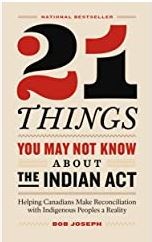Dear Editor,
Re: “Urban Lansdowne vision pitched,” News, Jan. 28.
I am an indigenous entrepreneur who has lived in Richmond for 19 years.
I understand in our modern world about what it takes to build a business. I also understand our indigenous history.
This article points out the beautiful life that the Halkomelem-speaking people lived and how the land was able to sustain them.
What the article fails to mention is that in 1876, the Indian Act came to power. This is likely what allowed those lands to be “slowly settled” by farmers.
What many people don’t realize are the articles within the Indian act. That land was free to be settled on because “Indians” weren’t allowed to leave their reserve unless given written permission.
I don’t claim to know everything. Like many, I’m still learning. But part of reconciliation is learning. And I believe media needs to do better.
I highly recommend that you and your readers read the book 21 Thing You May Not Have Known About The Indian Act by Kwakwaka’wakw author Bob Joseph.
It is eye opening and educates the reader about some of the rules that indigenous people still have to live by, especially those on reserve.
It also gives you an idea of what it was like for those who found themselves under a new law that governs them and people who look like them.
Tabi masih for your time and consideration.
Denise Halfyard
RICHMOND



